2019 marks the 100th anniversary of the Bauhaus movement since it started to revolutionize design. However, Bauhaus is more than just its distinct style and its design elements, it is a philosophy. More importantly, Bauhaus underlies fundamental and revolutionary educational principles. This was well documented in the Bauhaus manifesto and in the practical as well as theoretical curriculum of the Bauhaus school. The main appeal of Bauhaus and its original idea was to connect artists of different crafts to follow a united goal: to build a new generation of artists to create a better world and a better human experience. The dominant idea of Bauhaus is that the measure of all things is neither the fashion nor the system and certainly not the capital, but the human being (Titel Thesem Tempramente, 2019).
Bauhaus founder, Gropius, aimed to establish a universal design language to form the modern human being in the modern era. His belief is that to accomplish this, design does not only need to be taught academically but students also need to be equipped with practical skills and be given the opportunity to experiment with materials and mediums (Bauhaus100.de, 2018)
Bauhaus students were educated on the new art movement in the Bauhaus school in Germany. The closure of the school, enforced by the Nazi regime, did not mean the end of it. The opposite happened as former Bauhaus students immigrated to different parts of the world and continued their work, utilizing the Bauhaus principles. This led to the implementation of the Bauhaus style in different ways in many countries and the attraction of a global audience (DW Documentary, 2019).
There are two essential ideas that coin the Bauhaus philosophy, which are of high importance across all art and design disciplines. One of the fundamental ideas is the unity of craftsmanship and art and the other one is that art should not be produced to be aesthetically pleasing. Design should be solution- oriented and functional (Kunst-zeiten.de, 2014)
The opinions about the influence of Bauhaus on the current design landscape differ. Some experts think the Bauhaus spirit still lives on and can be seen influencing modern design across different disciplines. On the other side, there are experts like Philipp Oswalt, who oppose that view by stating Bauhaus and its core idea is dead. He describes in an interview that one of the main appeals of Bauhaus was that it sought after new solutions and was often ahead of its time. Today, this would not be the case anymore, according to Oswalt, Modern society celebrates individualism which leads to a fetishization of aesthetic values and the loss of design’s potential to express critic (Kürsten, 2019).
In this essay I will critically evaluate and analyse one contemporary example of design, which was argueably influenced by the Bauhaus philosophy and design movement. It is to determine, whether Bauhaus thinking still has an influence on modern design today after 100 years of its historical existence, or if we are simply fascinated by the Bauhaus mythos.
Yinka Ilori is a Nigerian British designer, who appeared in the 3 part docuseries from DW: Bauhaus World. He received his product and furniture design education from London Metropolitan University and designs a variety of things, inspired by his Nigerian culture. His work is vibrant, fun, colourful and highly narrative.
In the docuseries, he highlights that he needed to teach himself the practical skills of design as his university mainly focused on the theoretical education. Ilori taught himself the craft of refurbishing furniture and how to paint; these are skills he needs to realise his designs. He admires the Bauhaus approach of design education where craftmanship and art were united and taught accordingly. For him the crafting process is just as important as developing a design concept.
Ilori uses colours and shapes intuitively and experiments with different materials, which is part of his design process. This mirrors the Bauhaus philosophy when it came to educating their students on arts and craftsmanship. Students were supposed to experiment with different mediums and not simply copy certain guidelines. This intuitive approach led to the key elements that we associate with the Bauhaus style now: minimalistic, geometrical shapes, made for mass production, lack of decoration and use of flat primary colours. Ilori uses bright vibrant colours in his work, which indicates that his style does not align with the Bauhaus idea. However, Bauhaus student Josef Albers wrote a book called “Interaction of Color”, where he describes that designers should choose their colour palette carefully, respecting their meanings in culture and nature (Wilshere, 2016). His wife Anni Albers was a textile artist and print maker, who was known for blurring the lines between art and traditional craft. She was inspired by the culture around her when she was in South America and used local traditional patterns in her work (DW Documentary, 2019). This shows that, Iloris choice of colour and pattern does not automatically ‘disqualify’ him as a Bauhaus artist. He uses bright colours to express his cultural heritage ansnd the African culture. Therefore, it goes along with the Bauhaus idea.
In an interview Ilori explains that he seeks to create something new by using old objects he is inspired by. He wants to give them a narrative and a new meaning (Holeandcorner.com, 2015). Bauhaus was all about creating a new generation of artists and producing new designs that fulfill a function the modern world demanded. Gropius stated: “An object is defined by its nature. In order to design it to function properly, one must first of all study its nature” (Cook quotes Gropius, 2017). On the one hand, Iloris upcycling approach to design defies the Bauhaus philosophy as practitioners of the Bauhaus movement set out to develop completely new shapes, forms and concepts to achieve functionality to serve the modern human being. It also does not align with Bauhaus encouraging consumerism and mass production (Sission, 2019). On the other hand, Ilori does drastically change the appearance of an object, like a chair, by reinterpreting it and with that making it ‘functional’ again for the modern consumer. The modern consumer has different demands nowadays. The average consumer does not only look for functionality but also individuality, meaning and aesthetic appeal. This aspect would support what architect Oswalt stated: Bauhaus is dead because design without aesthetic value is no longer desired. However, Iloris\ design process can also be viewed as putting the Bauhaus idea into a modern context. People are in favour of the idea of upcycling and creating something new out of something old (Petro, 2019). This highlights that individualism is certainly a core aspect of modern society and dominates the design landscape. In an interview Iloris mentions that he does not like his work to be associated with upcycling stating: “I think my work is about more than just upcycling; it’s about narrative. After I’ve worked on the chairs, they become sculptures” (Dunmall quotes Iloris, 2018).
In the about section on his own website, Iloris makes known that he is interested in the relationship between function and form, which leads to believe that his approach of giving old objects new purpose and meaning through his design, is primarily motivated by the Bauhausian principle: form after function, or in this case achieving function through reforming,
Another interesting aspect of Iloris design approach is that he does not limit himself to a specific design branch or medium. He designs furniture, book covers, posters and product packaging. Bauhaus was emphasizing the importance of interdisciplinarity. Solely the word Bauhaus carries the connotation of the ‘Gesamtkunstwerk’ (trsl. complete work of art). Gropius understood art and design not as the works of one genius but the efforts of a well-formed team (Meyer, 2009). This also indicates what I have disussed in my professional development plan. A Graphic designer nowadays is expected to complete a project start to finish, mastering different disciplines and design skills. It confirms how Bauhaus thinking was ahead its time by foreseeing the importance of combining a multitude of aspects of design like architecture, painting, textile work and commercial design. Artists are fluent in multiple design languages and the border between art disciplines are slowly fading away.
The Bauhaus movement aimed to improve the human experience, which translated into them building social housing focusing on designing bright, open spaces in which people can live comfortably but also interact with one another. They built houses in East Germany, where socially disadvantaged and economically better off people can live in community. (DW Documentary, 2019). It is worth mentioning, that there are also facts opposing that Bauhaus was attempting to dismantle social differences, which is the abominable treatment of women in the profession, and the lack of class and racial diversity (Holleran, 2019). Nontheless, Bauhaus moved away from appearance to focus on people’s needs to create something supporting their activities (Norman, 2017). Ilori attempts to build a bridge through his designs and connects people and cultures. He does so by bringing Nigerian traditions into conversation with contemporary design. This is not only of importance to him personally to express his multi-culturality, as a Nigerian growing up in London. It also assures that African designers are not overlooked and can insert themselves into the contemporary design discourse. To connect people and their heritage through design is important nowadays, in an ever more connected and multi-cultural becoming world.
Concluding, the Bauhaus idea was not about simply copying existing guidelines and designs but about creating designs for the modern world. The two main philosophies behind Bauhaus were uniting all branches of art with craftmanship, as well as seeking function before form. During my analysis I came to the conclusion that the chosen contemporary design example, Yinka Ilori, definitely shows that his work and his approach to design is influenced by the Bauhaus idea. Bauhaus’ philosophy was the freedom of creativity and Ilori explores the creative space in a new way. He is discovering new ways of designing and merging two cultures into one through design. Nontheless, it is to mention that this designer is utilizing his own personal life experience and perspective to convey a message through unique new forms rather than applying a more broader approach other designers could follow. That being said, seeking for uniqueness and reflecting on the modern world in the parameters that are known to yourself, is part of the human condition and almost unavoidable. I do not believe objective design exists, because even though famous Bauhaus designs resemble key features, they also differ depending on the designer and the discipline it was applied to. Once you look into the indicidual story of the Bauhaus designer and artist, you come to realise that everyone has a unique approach to how do design Bauhaus. The reason for that being, Bauhaus is a way of thinking and not one specific style.
Note on sources used:
It was very helpful to watch documentaries on Bauhaus and shorter Youtube videos (listed in Bibliography). I also used research the internet as my main research method. I read through various onlline articles, blogs and Google books. I came across many media outlets emphasizing the existence of Bauhaus in todays day in age, where as it was harder to find experts that oppose that view. Nevertheless, I found people that actually utter their optinions about Bauhaus having lost its influence on todays design and society, despite the overwhelming noise that comes from conventional media about Bauhaus being influential and present to this day. I came to realise that reading through interviews with certain practitioners was espeically helpful to learn more about specific thoughts behind opinions and design approaches.
Yinka Iloris’ work:
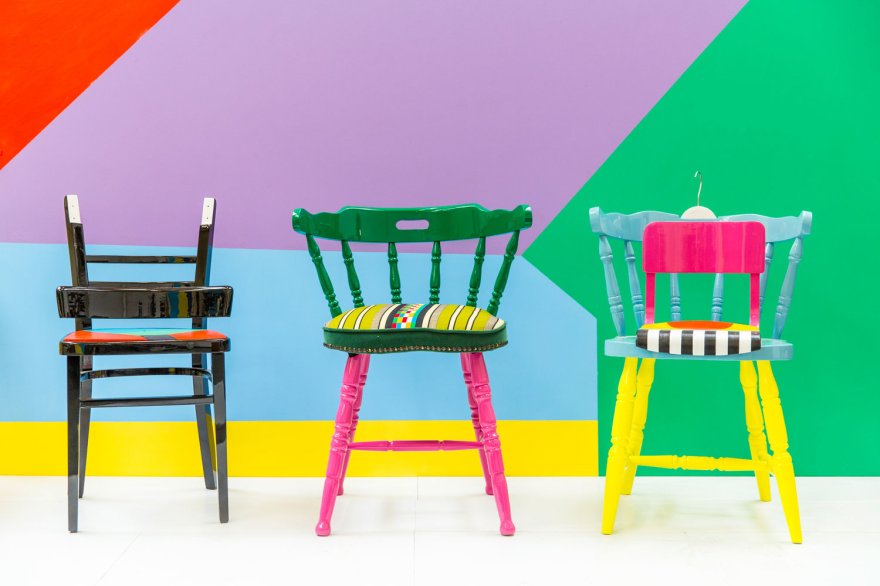

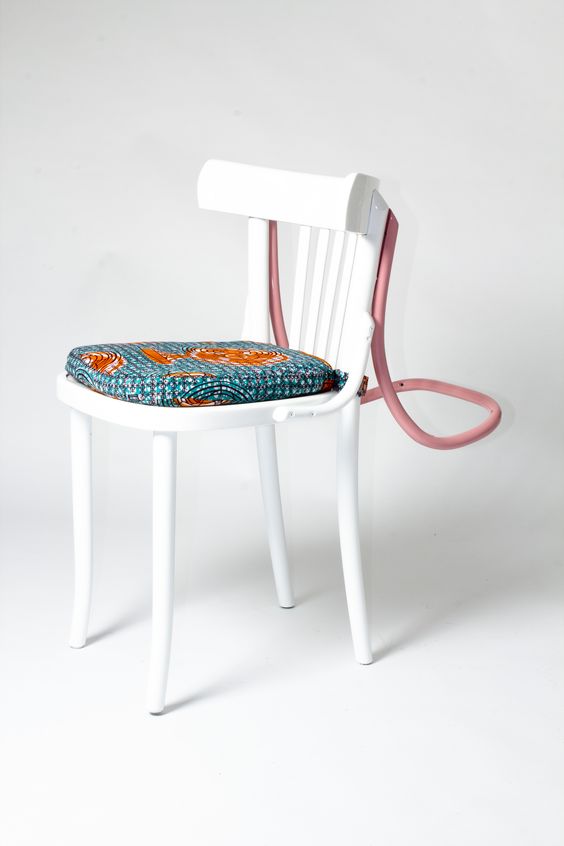
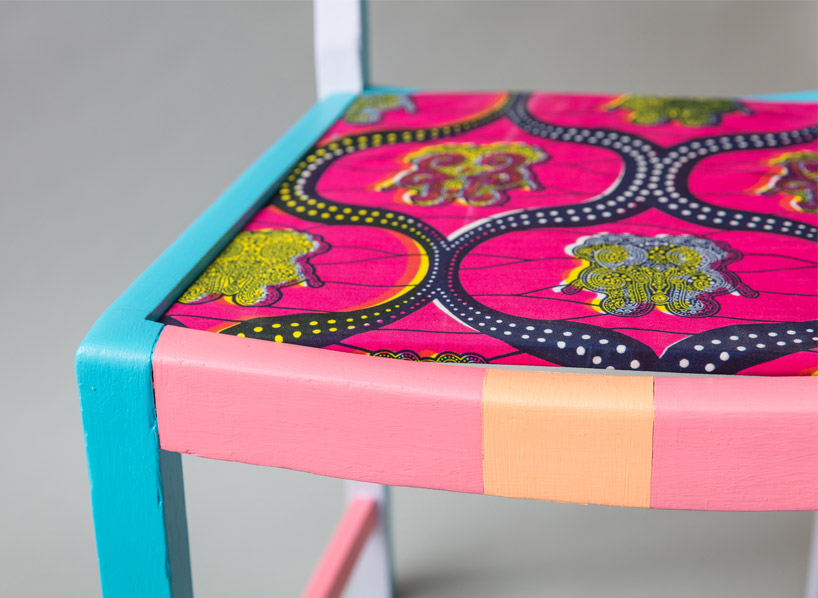

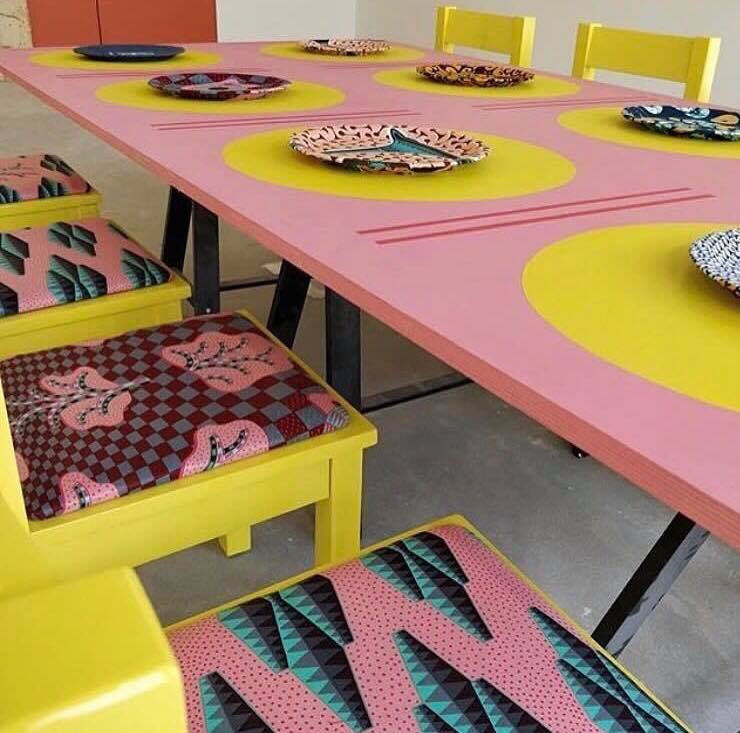
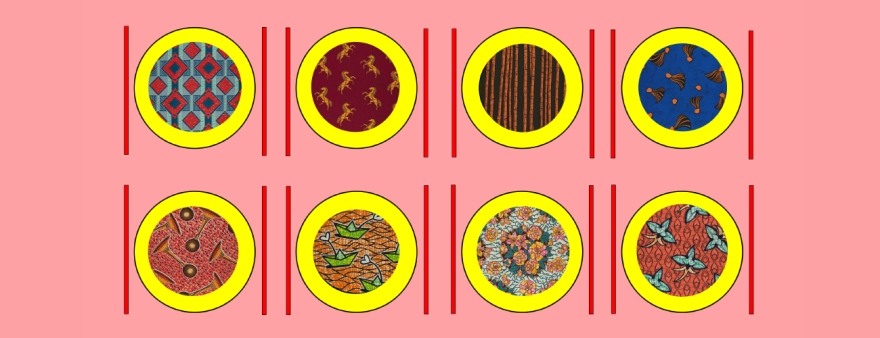

Bibliography:
Bauhaus100.de. (2018). Fokus auf die Bauhaus-Pädagogik. [online] Available at: https://www.bauhaus100.de/magazin/folge-dem-bauhaus-in-die-welt/fokus-auf-die-bauhaus-paedagogik/ [Accessed 21 May 2019].
Cook, W. (2017). The endless influence of the Bauhaus. [online] Bbc.com. Available at: http://www.bbc.com/culture/story/20171109-the-endless-influence-of-the-bauhaus.
Dunmall, G. (2018). Yinka Ilori on colour, community, and cultural heritage. [online] Frame Publishers. Available at: https://www.frameweb.com/news/yinka-ilori-on-colour-community-and-cultural-heritage [Accessed 21 May 2019].
DW Documentary (2019). Architecture, art and design – 100 years of the Bauhaus (1/3) | DW Documentary. YouTube. Available at: https://www.youtube.com/watch?v=rg3X1vZN5TA [Accessed 21 May 2019].
Holeandcorner.com. (2015). Designer-maker Yinka Ilori on his Nigerian inspirations. [online] Available at: https://www.holeandcorner.com/craft-collaboration/yinka-ilori-nigerian-inspirations [Accessed 21 May 2019].
Holleran, M. (2019). The Bauhaus Tried to Build a Better World. [online] The New Republic. Available at: https://newrepublic.com/article/153281/walter-gropius-man-built-bauhaus-book-review [Accessed 21 May 2019].
Iloris, Y. (2014). Yinka Ilori. [online] Yinkailori.com. Available at: https://yinkailori.com/ [Accessed 21 May 2019].
Kunst-zeiten.de. (2014). Bauhaus – Die Grundidee | Moderne Kunst – verstehen! [online] Available at: https://www.kunst-zeiten.de/Bauhaus-Allgemein [Accessed 21 May 2019].
Kürsten, S. (2019). 100 Jahre Bauhaus – Was ist von der Idee geblieben? | ttt – titel, thesen, temperamente. [online] Erstes Deutsches Fernsehen (ARD). Available at: https://www.daserste.de/information/wissen-kultur/ttt/sendung/ndr/bauhaus100.html [Accessed 21 May 2019].
Norman, D. (2017). Then and Now: The Bauhaus and 21st century design. [online] jnd.org. Available at: https://jnd.org/then_and_now_the_bauhaus_and_21st_century_design/ [Accessed 22 May 2019].
Meyer, U. (2009). Schmiede der Zukunft. [online] Tagesspiegel.de. Available at: https://www.tagesspiegel.de/kultur/bauhaus-schmiede-der-zukunft/1559972.html [Accessed 21 May 2019].
Sisson, P. (2019). The New Bauhaus in Chicago was a radical design school before its time. [online] Curbed. Available at: https://www.curbed.com/2019/4/4/18292828/bauhaus-chicago-industrial-design-moholy-nagy [Accessed 22 May 2019].
Titel Thesem Tempramente (2019). 100 Jahre Bauhaus: Was ist von der Idee geblieben? | ttt. YouTube. Available at: https://www.youtube.com/watch?v=aGkykoF5kyo [Accessed 21 May 2019].
Petro, G. (2019). Upcycling Your Way To Sustainability. Forbes. [online] 8 Feb. Available at: https://www.forbes.com/sites/gregpetro/2019/02/08/upcycling-your-way-to-sustainability/ [Accessed 21 May 2019].
Wilshere, A. (2016). Learning In The Bauhaus School: Five Lessons For Today’s Designers | Designlab blog. [online] Trydesignlab.com. Available at: https://trydesignlab.com/blog/bauhaus-school-five-lessons-for-todays-designers/ [Accessed 21 May 2019].
All images:
Iloris, Y. (2014). Yinka Ilori. [online] Yinkailori.com. Available at: https://yinkailori.com/ [Accessed 21 May 2019].
